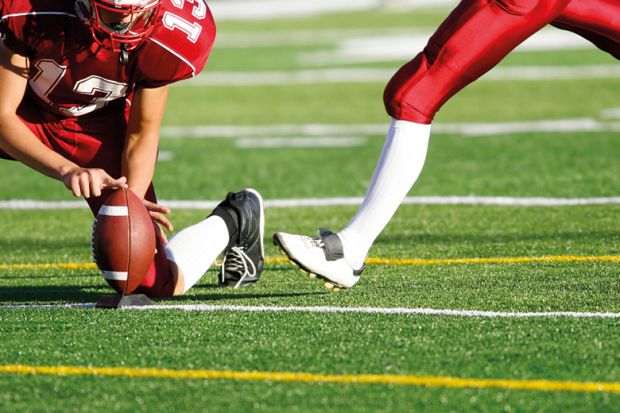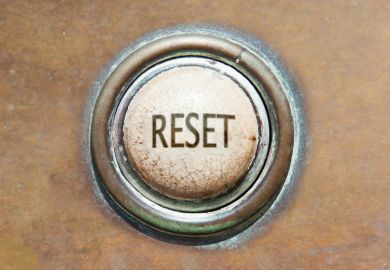Intercollegiate sports have become an important part of US university culture. Every year, millions of dollars are poured into it – bankrolled, in part, by exorbitant fees that students are obliged to pay.
The investment is usually justified by the “front porch” marketing mentality: the idea that college sports are essential for fundraising and student applications – and, therefore, for the college’s bottom line. But the evidence of that strategy’s success is dubious at best.
What is clear is that only a few colleges and universities make money directly from their sports programmes. The 65 colleges represented in the so-called Power Five conferences are well known to sports fans and they have called the shots in the National Collegiate Athletic Association (NCAA) for years. Their revenue streams from TV, product licensing, ticket sales and booster contributions are significant and well entrenched.
By contrast, the NCAA’s other 5,500 member institutions struggle to maintain fan interest and outside revenues despite all their upfront investment. It is a business model that makes no sense and increasingly comes at a significant cost to underfunded academic programmes and infrastructure. Moreover, that situation is only going to be exacerbated by the pandemic’s effects on college finances. With the very survival of many colleges and universities in jeopardy, lavish expenditure on intercollegiate sports is increasingly difficult to justify.
Proposals from the college sports establishment to deal with the financial disruptions caused by Covid-19 merely nibble around the edges of reform, shortening some schedules and eliminating some sports and staff. We need to think more broadly.
The Power Five conference schools should no doubt continue with their intercollegiate sports focus and their training of elite athletes who may wish to turn professional in the future. But the many colleges and universities outside the Power Five schools should ask themselves a serious question: might it be that the millions of dollars they pour in to intercollegiate sports would be better spent on health, fitness and wellness programmes for everyone?
Indeed, such courses and club sports could be offered – not merely to students but to entire local populations – at a fraction of what it costs to support intercollegiate sports. After all, colleges already have considerable athletics, recreational and training facilities. And their community programmes could be co-funded by private foundations, corporations, and federal, state and local agencies and governments. It might even help students realise significant reductions in tuition and fees that fuel graduate debt.
The curriculum of a reimagined athletics department would be game-changing. It would include the teaching of evidence-based strategies to maintain a person’s health over their entire lifespan. Taught by an array of medical and health professionals, this would include classes on disease prevention, proper nutrition, exercise, stress reduction, self-care and coping skills and mindfulness. The result would be longer lifespans and reduced societal costs resulting from the current epidemics of heart disease, obesity, colon cancer, diabetes and high blood pressure.
Some colleges have already adopted this model. Spelman College, in Atlanta, disbanded intercollegiate athletics eight years ago in favour of health and fitness classes and intramural and club teams for all. Students have raved about it and the college has never looked back. If other higher education leaders do not have the will to follow this lead, they risk condemning both their communities and their own institutions to shortened lifespans.
In reality, college sports programmes are not part of the core mission of education. They serve only an elite minority, leaving everyone else on the sidelines, spectators rather than participants. The public, alumni and donors will not object if this is where colleges and universities look to find the necessary efficiencies in the post-Covid-19 era – especially if it helps them and their communities live happier, healthier and longer lives.
Bruce B. Svare is professor of psychology and neuroscience at the State University of New York Albany.





